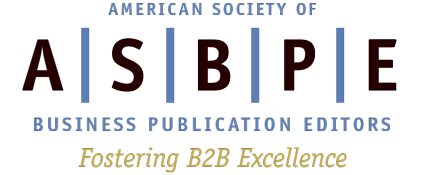New York — Online reporters and editors have lots of choices to make when confronting ethical issues. Making those journalists more aware of all the options – whether for B2B or general-interest publications – is a goal of the Online News Association’s current ethics initiative.
Leading the initiative is Associated Press standards editor Tom Kent. During an email exchange with Ethics News Updates, Kent referenced a November blog written by columnist Steve Buttry. The columnist’s thoughts include a detailed statement from Kent describing the “building blocks” approach being taken to ONA’s ethics code development.
“In the ONA ethics initiative,” Kent said, “we’re talking about creating a set of ‘building blocks’ that would let any journalistic organization (or individual blogger) create an ethics code that is thorough and transparent, while reflecting how that organization or blogger sees journalism.”
The code is being developed in three stages, Kent told ENU. “We will try to hit enough issues so that basic principles will be evident,” he said.
Stage one: Presentation of fundamental principles of journalism — such as telling the truth, not accepting gifts offered in return for favorable coverage, correction of errors, clear identification of sources, and avoiding plagiarism, Kent said.
Stage two: Choice of two coverage philosophies:
- objective approach where the journalist takes a neutral position;
- point of view approach where coverage reflects the journalist’s position.
Stage three: Schools of thought the different philosophies embrace. Armed with this set of “building blocks,” individuals can establish and publish a tailored ethics code.
Kent expects the initiative will cover 40 to 50 topics, presenting each side in every case. The previously-mentioned Buttry column listed these examples: “Are you going to allow, in news stories and social media posting by your staff, the expression of personal political opinion? Will you allow the editing of quotes for clarity and grammar, or are quotes inviolable? Are your online archives there forever, or will you remove items if, years after publication, they’re causing unintended problems for people who allowed you to interview them? Will you allow the removal of extraneous objects from news photos?”
Today’s ethics codes “must be malleable to reflect all kinds of journalism going on today, from individual bloggers to start-up organizations,” Kent said.
AP ‘news values’ should be studied
Kent assumed the new AP position of standards editor in 2007 with the responsibility to keep practices standardized for regional centers in the United States and abroad. For an example of such practices, Kent referred ENU to the online description of “AP News Values and Principles.”
Here are a few excerpts that also reflect typical concerns recently voiced to ASBPE’s ethics committee:
- “Material from anonymous sources can be used only if the material is information and not opinion or speculation, and is vital to the news report.”
- “Bylines may be used only if the journalist was in the detailed location to gather the information reported. If a reporter in the field provides information to a staffer who writes the story, the reporter in the field gets the byline, unless the editor in charge determines the byline should more properly go to the writer.”
- “Staffers must notify supervisory editors as soon as possible of errors or potential errors, whether in their work or that of a colleague.”
- “Nothing in our news report — words, photos, graphics, sound or video — may be fabricated. We don’t use pseudonyms, composite characters or fictional names, ages, places or dates.”
- “We do not alter quotations, even to correct grammatical errors or word usage. If a quotation is flawed because of grammar or lack of clarity, the writer must be able to paraphrase in a way that is completely true to the original quote”
